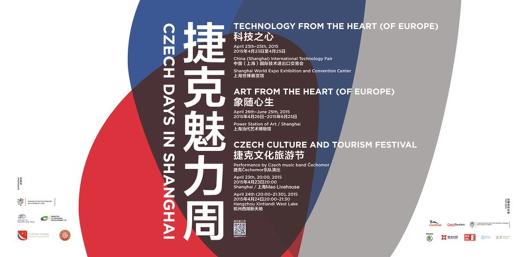
Czech Republic and China – Traditionally Strong Partnership with Great Potential
13.04.2015 / 05:55 | Aktualizováno: 19.02.2021 / 12:02
Czech Republic and People´s Republic of China – two countries geographically very distant – have lots in common, share similar history and build a strong partnership. This partnership began more than 65 years ago when in early October 1949 Czechoslovakia (as a predecessor of the Czech Republic) recognised the newly established People´s Republic of China.
The Sino-Czech relations go of course further back in history and one can find interesting examples of cooperation older than the existence of the People´s Republic of China. One such an example is Mr. Karel Slavíček – who was a catholic priest, Jesuit missionary, mathematician, astronomer, and musician – and came to China in 1716. His half a year long journey by ship from Europe to Macao he used for learning Chinese. He mastered the language perfectly and he is thus considered the first Czech sinologist. He spent the remaining of his life – approximately 20 years – in China and died in Beijing. He became a good acquaintance of the Emperor Kang Xi from Qing Dynasty and served inter alia as a musician in the Imperial Court. Karel Slavíček is also considered the first author of a map of the city of Beijing.
Another example of traditionally good cooperation dates to 50´s of the 20th century. Not long after the People´s Republic of China was declared, the Czechoslovak government donated and sent several hundreds of agricultural machinery to China. By the decision of the Chinese Government the donation was concentrated to one area in Hebei province where China-Czechoslovak Friendship Farm was established by the name ZHŌNG JIÉ.
More recently, in April 2012 Premier Wen Jiabao announced 12-point Initiative for cooperation between 16 Central and Eastern European Countries and China. The Czech Republic has welcomed the step and actively participated in a number of events organised in China as well as in Central and Eastern Europe since. The Czech Republic considers this Initiative – often called “16 + 1” – as a useful platform to enable more bilateral contacts. The frequency of our high-level contacts, very importantly expert contacts and not least the people-to-people contacts have increased in the last years.
In 2014 Czech President Miloš Zeman and Chinese President Xi Jinping met twice. First time in February on the margins of the Opening of Winter Olympic Games in Sochi. Second time when in October Beijing hosted the state visit of President of the Czech Republic. Other Czech ministers – of foreign affairs, of industry and trade, of health – visited China last year. A number of high Chinese leaders travelled for a visit to the Czech Republic. Vice-premier Zhang Gaoli paid a successful visit to Prague in August 2014. He met with Czech President, Czech Prime Minister and attended China Investment Forum in Prague. And in December 2014 premiers of both countries – Bohuslav Sobotka and Li Keqiang – had fruitful discussion about bilateral cooperation at their meeting in Belgrade.
In 2015 the high intensity of high level visits will continue. Now in April an important delegation headed by the Speaker of Parliament Jan Hamáček together with ministers of industry and trade, of regional development and of health will visit Beijing and Shanghai. Mr. Hamáček will meet with a number of Chinese leaders. His visit is of great importance for the Czech Days in Shanghai. The Czech Republic is also preparing an official visit of Chinese leaders in the first half of 2015. A strong Chinese delegation is expected to participate in Health Forum in June 2015 in Prague. In the second half of 2015 Czech Prime Minister Bohuslav Sobotka is to visit China for the Summit of the Initiative for Cooperation between China and Central and Eastern Europe.
There are many fields in which both countries cooperate and can further enhance their cooperation. Besides economic and cultural cooperation (see extensive articles dedicated to each of these topics) there is also a great potential to build even stronger partnership at the highest political level, to advance regional cooperation, to promote people-to-people contacts. Both countries experience growth in numbers of students studying in the other country and also in numbers of tourists visiting the other country. The Czech Republic has streamlined and facilitated its visa policy for Chinese visa applicants to support this dynamic trend. More and more Czech Regions and Chinese Provinces establish partnerships and make the best use of it to go ahead with concrete projects of collaboration. One can count dozens of sister-cities in the Czech Republic and the People´s Republic of China. Some of the best foundation for cooperation between the two nations comes from knowing and understanding each other better by meeting each other more often, discussing with each other more deeply and discovering the culture and sights. That is the aim of Czech Days in Shanghai.
To bring the two countries even closer together both governments work hard to establish direct flight between Prague and one of the Chinese cities, possibly Beijing. If the project of the direct flight succeeds it will offer a new dimension and great new potential of cooperation.




